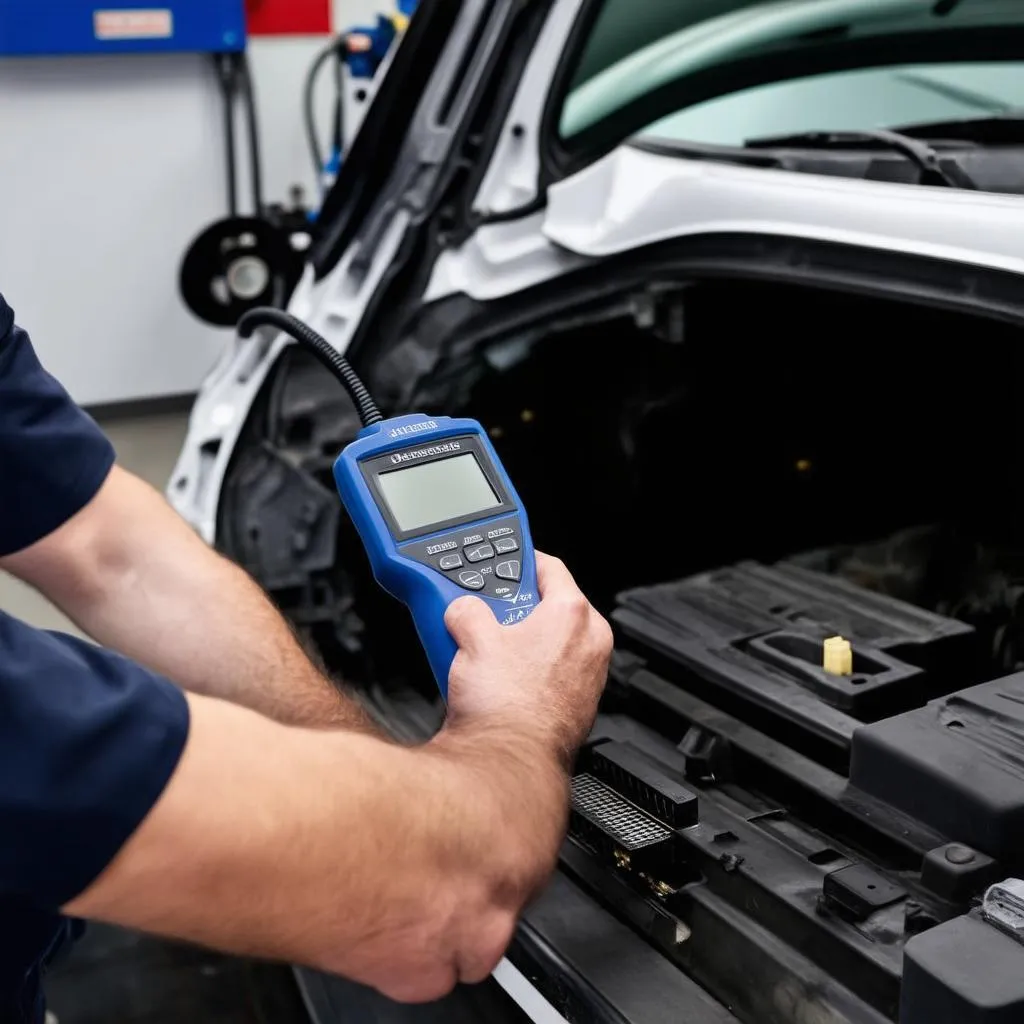Imagine this: you’re cruising down the road in your sleek Mercedes, and suddenly, a daunting trio of warning lights illuminates your dashboard – ABS, ESP, and BAS. These flashing lights signal a potential issue with your car’s critical safety systems. Don’t panic! This comprehensive guide will walk you through the common causes, symptoms, and fixes for the “Mercedes ABS/ESP/BAS malfunction.”
Understanding the ABCs (and ESP and BAS) of Your Mercedes
Before we dive into the fixes, let’s understand what these systems do:
- ABS (Anti-lock Braking System): Prevents wheel locking during hard braking, allowing you to maintain steering control.
- ESP (Electronic Stability Program): Maintains vehicle stability and prevents skidding, especially on slippery roads or during sharp turns.
- BAS (Brake Assist System): Recognizes emergency braking situations and applies maximum braking force to reduce stopping distance.
These systems often work in conjunction, relying on sensors that communicate with your Mercedes’ central computer. A fault in one system can trigger warnings in the others.
Common Causes of the Malfunction
The notorious ABS/ESP/BAS malfunction in Mercedes vehicles can stem from a variety of issues, ranging from simple sensor problems to more complex electronic control unit failures. Here are some of the most common culprits:
- Faulty Wheel Speed Sensors: These sensors monitor the rotational speed of each wheel and relay this information to the ABS/ESP/BAS control unit. A malfunctioning sensor can send incorrect data, leading to system errors.
- Brake Light Switch Issues: A faulty brake light switch can disrupt the signal that informs the ABS/ESP/BAS control unit that the brakes are being applied.
- Low Battery Voltage: These safety systems require a stable and sufficient voltage supply. A weak or dying battery can cause erratic behavior and trigger warning lights.
- Wiring Problems: Corroded, damaged, or loose wiring harnesses connecting the various components can disrupt communication and lead to system malfunctions.
- Control Unit Failure: In some cases, the ABS/ESP/BAS control unit itself may experience internal faults, requiring specialized diagnosis and potential replacement.
mercedes-abs-esp-bas-warning-lights|Mercedes Dashboard Warning Lights|A Mercedes-Benz dashboard illuminated with the ABS, ESP, and BAS warning lights.
Recognizing the Warning Signs
Identifying the symptoms of an ABS/ESP/BAS malfunction is crucial for a timely diagnosis. Keep an eye out for:
- Illuminated Warning Lights: The most obvious sign, the ABS, ESP, and BAS warning lights may illuminate simultaneously or individually on your dashboard.
- Longer Stopping Distances: If your brakes feel less responsive or your car takes longer to come to a complete stop, it could indicate an issue with the ABS or BAS.
- Wheel Locking During Braking: Experiencing your wheels locking up, especially on slippery surfaces, suggests a potential ABS malfunction.
- Stability Control Issues: If your car feels unstable or skids easily, particularly during turns or on uneven roads, the ESP might be compromised.
mechanic-inspecting-wheel-speed-sensor|Mechanic Checking Wheel Speed Sensor|A mechanic inspecting and testing a wheel speed sensor on a car.
Gearing Up for a Fix
Before you attempt any repairs, gather the following:
- OBD-II Scanner: This tool reads diagnostic trouble codes (DTCs) stored in your Mercedes’ computer, pinpointing the source of the malfunction.
- Repair Manual: A model-specific repair manual provides invaluable insights into your car’s electrical and braking systems, guiding you through diagnostic and repair procedures.
- Basic Tools: A socket set, screwdrivers, and a multimeter are essential for basic troubleshooting and sensor checks.
obd2-scanner-connected-to-car|Car Diagnostic with OBD2 Scanner|An OBD2 scanner plugged into a car’s diagnostic port, displaying diagnostic trouble codes.
Troubleshooting the Malfunction: A Step-by-Step Guide
Important Note: The following steps provide general guidance. Always refer to your Mercedes’ specific repair manual for detailed instructions.
-
Read Diagnostic Trouble Codes: Connect the OBD-II scanner to your car’s diagnostic port (usually located under the dashboard) and retrieve the stored DTCs. These codes provide valuable clues about the specific areas to investigate.
-
Check Wheel Speed Sensors: Inspect each wheel speed sensor for visible damage, debris, or corrosion. Use a multimeter to test their resistance and ensure they are within the manufacturer’s specifications.
-
Inspect the Brake Light Switch: Locate the brake light switch (usually mounted above the brake pedal) and check for proper operation. Ensure it engages and disengages correctly when the brake pedal is pressed and released.
-
Examine Wiring and Connections: Carefully inspect the wiring harnesses connected to the ABS/ESP/BAS components for signs of damage, loose connections, or corrosion. Repair or replace any faulty wiring as needed.
-
Test Battery Voltage: Use a multimeter to check the battery voltage. A reading below 12 volts with the engine off could indicate a weak battery that needs charging or replacement.
-
Seek Professional Assistance: If the problem persists after performing these checks, it’s advisable to consult a qualified Mercedes mechanic or an authorized dealership for further diagnosis and repair. They possess the expertise, specialized tools, and diagnostic equipment to address complex electronic issues.
Frequently Asked Questions
Q: Can I drive my Mercedes with the ABS/ESP/BAS lights on?
A: While it’s not recommended, you can still drive your car cautiously. However, remember that your safety systems may not function optimally, potentially increasing the risk of accidents, especially in emergency braking situations or on slippery roads.
Q: Are there aftermarket diagnostic tools specifically designed for Mercedes vehicles?
A: Absolutely! Brands like CARDIAGTECH offer advanced diagnostic scanners tailored for Mercedes and other European makes. These tools provide in-depth system analysis, code clearing capabilities, and even component actuation for comprehensive troubleshooting.
Q: What is the average cost of replacing a wheel speed sensor?
A: The cost can vary depending on the Mercedes model and labor rates. However, expect to pay between $150 to $300 per sensor for parts and labor.


